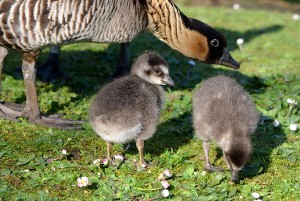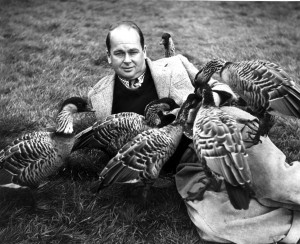Success for Hawaiian geese in the wild
 WWT is celebrating a success in the wild for one of the rarest species at its Wetland Centres, the Hawaiian goose, known as a nene (pronounced nay-nay).
WWT is celebrating a success in the wild for one of the rarest species at its Wetland Centres, the Hawaiian goose, known as a nene (pronounced nay-nay).
It was driven to near extinction in the early 1950s when only 30 individuals were left in the world, all on Hawaii Island. WWT founder Sir Peter Scott brought a pair to the UK and bred them till there was a large enough flock to return birds to the island of Maui, where they had previously lived.
There are now about 2,500 on Hawaii, Maui, Molokai and Kauai islands, and last week for the first time a pair were spotted on another

island, Oahu. The pair made their own way to the island, and it’s the first time they’ve been seen there since the 1700s.
The nene is still the world’s rarest goose, and WWT continues to breed them today. Visitors to WWT's Wetland Centres can meet and feed these incredibly friendly geese - a trait that contributed to their near-demise. They had no natural predators on the isolated Hawaiian islands, so didn't feel threatened by Polynesian settlers to the islands and their domestic animals that nearly drove them to extinction.
Hawaiian geese have one of the longest breeding seasons of any goose and eggs are laid during British wintertime. Right now there are of fluffy goslings at Slimbridge, London, Martin Mere, Arundel, Llanelli, Castle Espie and Washington Wetland Centres.
Graham Clarkson WWT's Captive Animal Manager said:
“Hawaiian geese have a special place at WWT. They're so friendly and very, very gentle which is great for small children.
“They also have a special place in our conservation history. Without our breeding expertise they would be extinct. This week’s news that the reintroduced birds have begun the slow process of colonising another island is a fantastic and hopeful step forward for the species.”

